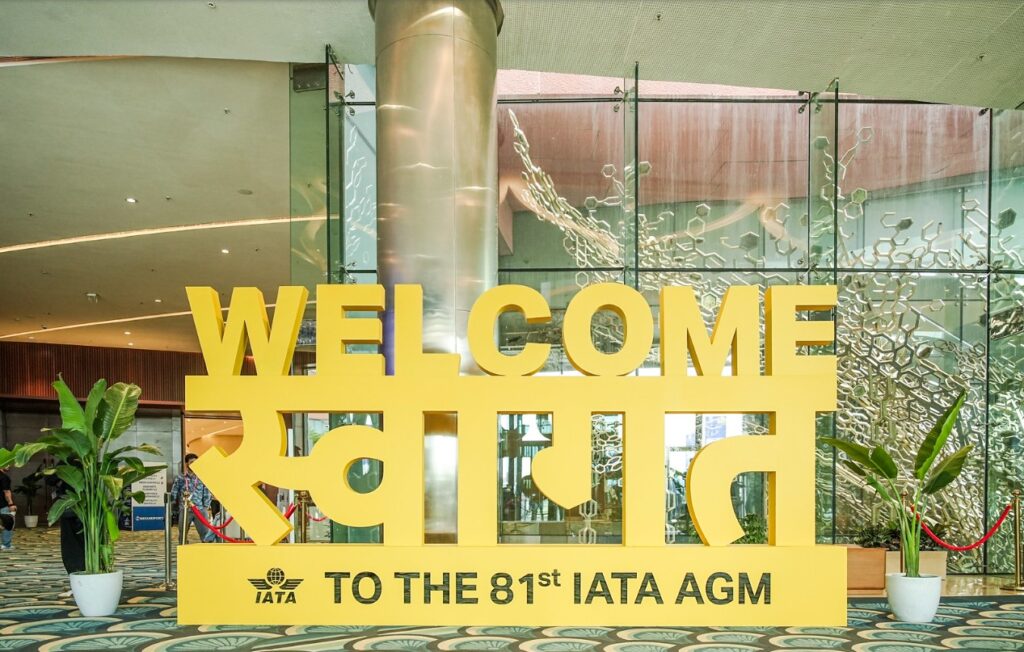India’s Aviation Sector Soars, But Challenges Remain: Insights from IATA AGM
New Delhi, India – 01-03 June 2025 The recent International Air Transport Association (IATA) Annual General Meeting (AGM) in New Delhi provided a comprehensive outlook on India’s booming aviation sector, highlighting its immense potential while also addressing key areas for improvement. Amitabh Khosla, IATA’s Country Director for India, Nepal, and Bhutan, presented a detailed briefing on the “Power of Flight” in India.

India: A Global Aviation Powerhouse in the Making
India has firmly established itself as a major player on the global aviation stage, currently ranking as the 3rd largest aviation market worldwide in terms of passenger traffic (both domestic and international). It also holds the position of the 6th largest air cargo market. This exciting growth is underpinned by several factors:
- Stronger Airlines & Record Aircraft Orders: Indian airlines are becoming more robust, reflected in significant aircraft orders.
- Expanding Airport Infrastructure: Major airport expansions are underway in key hubs like Delhi, Mumbai, Bangalore, and Hyderabad. Additionally, second city airports are being developed for crucial gateways, including Noida International Airport and Navi Mumbai International Airport.
- Supportive Government Policies: The Indian government is actively focusing on addressing issues and implementing supportive policies to foster a stronger aviation ecosystem.
Aviation’s Significant Economic Contribution
Aviation is a vital economic engine for India, contributing substantially to job creation and GDP. According to IATA’s “Value of Aviation” report (based on 2023 figures), the sector supports 7.7 million jobs in India, including secondary and tourism impacts. It also contributes a staggering USD 53.6 billion to India’s GDP, representing 1.5% of the total. Beyond direct economic benefits, air connectivity plays a crucial role in boosting tourism, trade, and investment.

Priorities for the Future: Addressing Key Areas
While the outlook is largely positive, the IATA AGM also highlighted several critical areas that need continued focus to ensure sustainable growth:
1. Consumer Focus: Affordability and Rights
India has made commendable progress in areas like passenger rights and facilitation, with initiatives like Digi Yatra aligning with IATA’s One ID concept. Air travel affordability, a frequent consumer concern, has seen positive trends due to competition. Data from a new IATA Economics report indicates that compared to 2011, domestic and international average airfares in 2024 were 21% and 38% lower respectively, in real terms. IATA encourages India to ratify the Montreal Protocol 2014 to strengthen the international deterrence system.
2. High-Cost Environment: Taxation Challenges
India’s aviation sector faces a high-cost environment, particularly concerning taxation. Airlines encounter significant uncertainty for tax planning due to positions taken by tax authorities and frequent tax notices on untested and new issues. Recent examples include GST notices to international airlines in 2023-24 (though import of services between airline HQs and local branches were later exempted, respecting international conventions 22) and tax notices to international leasing companies in 2024-25, which could have an expected cost impact on the industry. IATA emphasizes the need for stability and predictability in industry taxation.

3. Airport Regulation and Slots
The Airports Economic Regulatory Authority of India (AERA) plays a vital role in regulating airport infrastructure providers. IATA stresses the need for AERA to scale up its institutional capacity and resources to meet the demands of the growing market and safeguard consumer interests. The establishment of a service-level framework by AERA, linking user charges to service levels, is a positive step. However, IATA expressed disagreement with proposals from airport operators to club tariff determination for Mumbai and Navi Mumbai airports and extend regulatory control periods from 5 to 10 years, stating these do not benefit consumers.
Regarding airport slots, IATA highlighted the importance of adherence to WASG/MoCA Slot guidelines and the need for coordination committees. Mumbai International Airport Limited (MIAL) was commended for setting up a Coordination Committee for Mumbai Airport and for respecting airline historics and accepting cargo operations beyond mid-August 2025.
4. Airspace Management and Modernization
The Airports Authority of India (AAI) was lauded for its effective management of air traffic during a recent surge in volume over the Arabian Sea oceanic airspace, including an overnight increase of 25% in Mumbai FIR and over 60% in oceanic traffic. Priorities for airspace include restructuring to enhance capacity and fostering closer regional collaboration for seamless South Asian airspace.
5. Sustainable Aviation Fuel (SAF)
SAF production and availability are top priorities for the industry and the government. India’s position as the world’s 3rd largest ethanol producer and consumer presents immense potential for SAF production. With oil marketing companies eager to produce and airlines keen to access SAF, domestic production is expected to be available from 2026. The onboarding of Air India and Indian Oil onto the Civil Aviation Decarbonization Organisation (CADO) SAF Registry is a significant step. The signing of an MoU between the National Accreditation Board for Certification Bodies (NABCB) and the International Sustainability and Carbon Certification (ISCC) for accrediting Indian SAF Certification Bodies is also a positive development.
The Path Forward
As emphasized in the IATA Economics report on “Aviation in India,” passenger growth alone is not sufficient to guarantee airline profitability. A supportive wider regulatory environment is crucial for sustained air transport growth in India. The insights from the IATA AGM underscore India’s dynamic aviation landscape, poised for continued expansion with strategic focus on these key areas.




